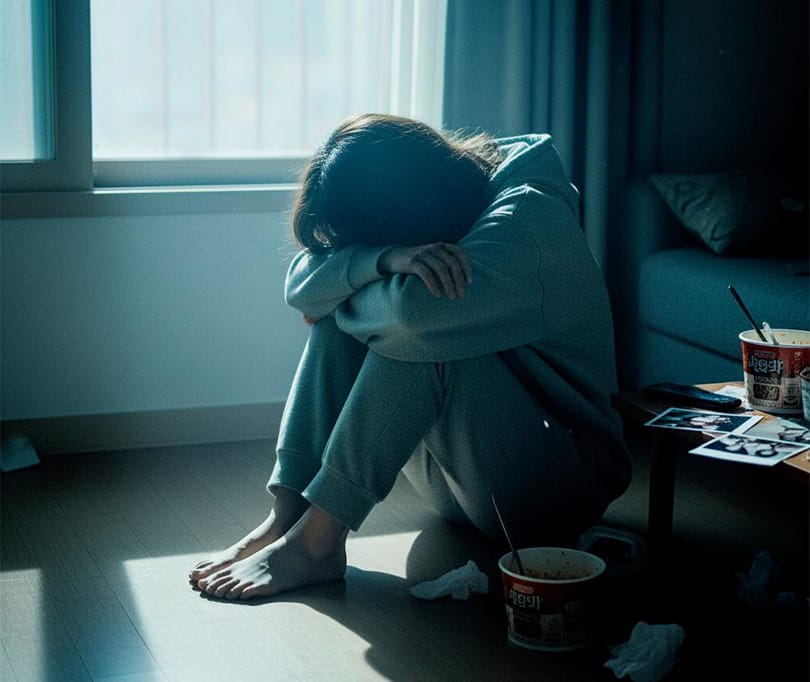When Sadness Won't Let Go: Understanding the Line Between Depression and the Blues

We all have those days. The breakup that leaves you hollow. The job rejection that stings. The overwhelming pressure at work that makes you want to hide under the covers. Life throws these moments at us, and we feel sad, empty, maybe even hopeless for a while. But when does normal sadness cross the line into something more serious?

Feeling Blue Is Part of Being Human
Let's be clear: feeling down is completely normal. Just like we laugh when something's funny and cry when we're hurt, sadness is proof that we're alive and feeling. It's our emotional system working exactly as it should.
Some people seem to have this figured out – they know their escape routes from the emotional quicksand. Maybe they lace up their running shoes and hit the pavement. Maybe they call that friend who always knows what to say. Or maybe they blast their favorite playlist and sing until they feel human again. Like finding a branch to pull themselves out of the mud, they know how to rescue themselves.
But Depression Is a Different Beast Entirely
People with depression describe something fundamentally different. One patient put it this way: "It's like being trapped in quicksand that never stops pulling. There's nothing to grab, no one can hear you, and you're surrounded by endless darkness."

Here's the crucial difference: it's not just feeling sad – it's a complete shutdown of both body and mind. The things that used to bring joy? They feel like nothing. Meeting friends? Pointless. Your favorite hobby? You can't even remember why you liked it.
The Clinical Reality Check
Mental health professionals use the DSM-5 criteria for diagnosis. If you experience five or more of these symptoms nearly every day for at least two weeks, it's time to take this seriously:
- Depressed mood most of the day, nearly every day
- Loss of interest or pleasure in almost all activities
- Significant weight change (5% in a month)
- Insomnia or sleeping too much
- Physical agitation or feeling slowed down
- Fatigue or loss of energy nearly every day
- Feelings of worthlessness or excessive guilt
- Difficulty thinking, concentrating, or making decisions
- Recurrent thoughts of death or suicide
When these symptoms interfere with your ability to function – when you can't work, study, or maintain relationships – this isn't something to push through alone.
When You Can't Pull Yourself Out
Here's what makes depression so insidious: the very nature of the illness prevents you from doing what might help. Regular sadness fades with time or improves with self-care. Depression doesn't work that way.
Getting out of bed becomes an Olympic event. Brushing your teeth feels like climbing Everest. You know you need to go to work or school, but your body simply won't cooperate. When a stay-at-home parent can't manage basic household tasks, or a student can't even open a textbook – that's not weakness, that's illness.
The most dangerous part? The conviction that this is permanent. The brain whispers, "This is your life now. Forever." And that's when thoughts of suicide creep in. Studies show that about 60% of people who die by suicide had depression.

Stop Trying to Bootstrap Your Way Out
There's this persistent myth that depression is about mental weakness, that you should just "think positive" or "try harder." That's like telling someone with diabetes to just think their blood sugar back to normal. It doesn't work that way.
Depression involves actual brain chemistry – neurotransmitters like serotonin, dopamine, and norepinephrine are out of balance. This is a biological illness with psychological symptoms. That's why antidepressants work – they help restore that chemical balance.
The good news? Depression is highly treatable. Initial recovery rates reach 70-80%. Modern antidepressants have minimal side effects and are safe for long-term use.
If Someone You Love Is Struggling
Please don't say "cheer up" or "look on the bright side." To someone with depression, this feels like being told to just walk it off with a broken leg.
Here's what actually helps: Be present without trying to fix everything. Listen without judgment. Offer to go with them to appointments. Help them remember to take medication. Suggest gentle activities but don't push if they say no. And if they mention suicide, even casually, get professional help immediately.
The Bottom Line
The boundary between sadness and depression is clearer than you might think. When symptoms persist beyond two weeks, when you can't function in daily life, when you feel trapped in hopelessness with no escape route – that's not normal sadness anymore.
Depression is often called the common cold of mental health, but unlike a cold, it won't just go away on its own. With proper treatment, recovery is not just possible – it's probable.
If you're reading this and recognizing yourself in these words, please hear this: You don't have to white-knuckle your way through this alone. Reaching out for help isn't giving up – it's choosing to fight with the right weapons. You deserve support, you deserve treatment, and you deserve to feel like yourself again.
You are not alone in this darkness, even when your brain insists otherwise. Help exists. Hope exists. And yes, even when you can't feel it right now, a future where you feel genuinely okay again exists too.
